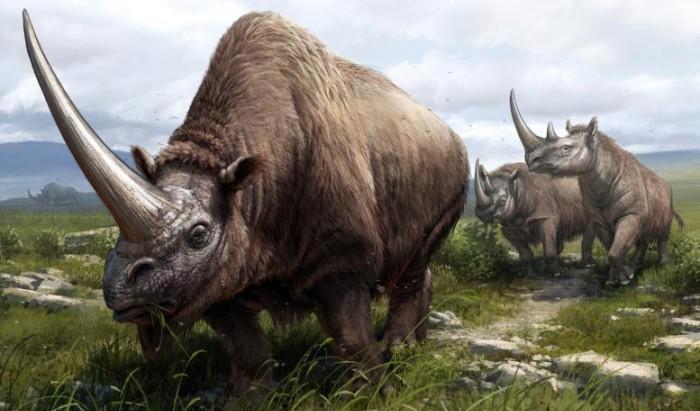According to foreign media reports, the relationship between the world's five surviving rhino species has always been an ancient question dating back to the time of Darwin. The answer has been hard to come by, and one of the reasons is that most rhinos were extinct before the Pleistocene. The researchers, published auger 24 in the journal Cell, helped fill a gap in the rhino evolutionary "family tree" by analyzing the genomes of all five living species and the genomes of three ancient and extinct species.

The findings show that the oldest division was about 16 million years ago when African and Eurasian ancestry separated. They also found that — while today's declining rhino populations have lower genetic diversity than in the past and more inbreeding — rhinos have historically had low levels of genetic diversity.
"We can now show that the main branch on the rhino tree of life is between geographical regions, i.e. between Africa and Eurasia, not between rhinos with one horn and two horns," said Love Dalén of the Paleogenetics Centre and the Swedish Museum of Natural History. "The second important finding is that all rhinos, even extinct rhinos, have relatively low genetic diversity. In part, this means that the low genetic diversity we see in today's rhinos (which are all endangered) is partly due to their biological properties. ”
Mick Westbury of the University of Copenhagen in Denmark said: "Over the past 2 million years, all eight species have generally shown a sustained but slow decline in populations, or small population sizes that have persisted over a longer period of time. Persistently low population sizes may indicate that rhinos are generally adapted to low levels of diversity. ”
This concept is consistent with the apparent lack of accumulation of harmful mutations in rhinos in recent decades. Over the past 100 years, Westbury said, rhinos may have cleared harmful mutations that allow them to remain relatively healthy, despite low genetic diversity.
The new study was inspired at a scientific conference. Dalén and Tom Gilbert of the University of Copenhagen have been studying different rhino species separately. They realized that if they joined forces and worked with researchers around the world, they could make a comparative study of all the living rhinos and the three species that went extinct during the last ice age.
But the researchers note that there are some challenges to overcome. "When we decided to put all the rhino data together and make a comparative genomics study, we also faced the 'big data' problem," the researchers explain. ”
Genomic data represent different data types, in part because they contain both modern and ancient DNA. The team had to develop new analytical tools to take these differences into account. The new methods and tools they developed can now be applied to the study of other taxa.
Dalén said the findings were "partly good news, other part not." Rhinos' low levels of genetic diversity are part of their long history and have not led to an increase in health problems associated with inbreeding and disease-causing mutations.
"However, we also found that today's rhinos have lower genetic diversity and higher levels of inbreeding compared to our historical and prehistoric rhino genomes," he said. "This suggests that the recent decline in populations caused by hunting and habitat destruction has had an impact on the genome." This is not a good thing, as low genetic diversity and high inbreeding may increase the risk of extinction of today's species. ”
The researchers say the findings do have some practical implications for rhino conservation. "Now we know that the low diversity we see in contemporary individuals may not indicate an inability to recover, but rather a natural state of rhinoceros," Westbury said, "and we can better guide recovery programs by focusing on increasing population size rather than individual genetic diversity." ”
The team hopes the new findings will help continue to study rhinos and protect them. Dalén reports that his team is now working on more in-depth research into the extinct woolly rhinoceros. Meanwhile, Westbury is participating in a comparison of the genomes of African black rhinos that were sampled before the recent population decline and compared to the genomes of contemporary individuals.
"We hope this will provide a framework to better understand where the transferred populations may have come from, direct changes in genetic diversity, and whether any populations may disappear forever because of humans," Westbury said. ”